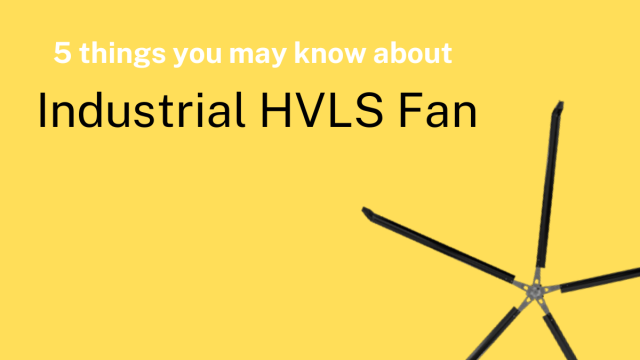In this article, we will discuss some of the most important things to consider before installing your low-speed, high-volume fan system to ensure the fan works effectively within your space. From assessing the area and determining the right size and number of HVLS fans to suggestions and tricks to ensure a smooth and efficient installation, we’ll go over the basics of what you must consider before setting up an HVLS system.
Installing HVLS fan can dramatically enhance the air circulation of your commercial space. However, there are many important things to think about before starting the installation. Starting with determining the size and the number of fans needed to ensure that your electrical system can handle the demands, these are aspects that are crucial to the success of your industrial HVLS fan installation.
Here are a few of the essential elements you need to know about industrial HVLS fans:
MAXIMUM SIZE OF THE HVLS FAN
In preparing for the installation of industrial HVLS fans, commercial companies need to evaluate the area and decide on the proper size of fans. There’s a lot of math involved in the design of fan size so that you can ensure that the airflow is proper in an area.
One measure that is important to the sizing of a fan is the distance between the ceiling as well as the fan’s body, and the typical is 36 inches. The blade’s length typically varies between 7 and 24 feet, depending on the room’s dimensions.
To figure out the correct number and the size of fans, installation manuals will help you determine the ideal number based on the information available regarding the building, such as area and air movement, and help determine the required size of the fan.
REDUCTION IN ENERGY COST
It runs at a low speed that uses a low amount of power compared to other types of industrial fans and air conditioning systems. It is powered by the power required to light three bulbs. It’s a great method to reduce energy consumption.
EXISTING CLIMATE CONTROL
While It can aid with cooling and heating, it’s also essential to consider how they can be integrated and work with the current climate control system to improve air circulation and create a more relaxing atmosphere.
Depending on whether the climate control system in place comprises an air conditioner and a heating unit, an HVLS fan aids in the circulation of air through the building and helps make the overall ambiance of the area more relaxing.
If you speak to an expert fan technician, they’ll know the most suitable places within your area to put fans to take advantage of the warm or cool air that is already flowing into your home. It doesn’t just cool the air but also moves it into your area efficiently to make it feel more at ease.
INSTALLATION
Installing it can be different; however, the most common method is to mount the fan to a tall ceiling and then attach it to an electricity source. Specific models also require additional wiring or ductwork to connect with your existing HVAC system.
FAN CONTROL PREFERENCES & INSTALLATION
Another crucial aspect to consider when installing the HVLS fan is how the fans are controlled. Sure commercial space owners may prefer that the fans operate with single controllers, whereas others may prefer multi-fan controllers. These systems can also be coupled with Building Management Systems to facilitate their operation for property owners.
Other factors to consider include how often the basis of a timer should control the fan, so they stop after the set duration. This is beneficial for maintaining constant temperatures and airflow in commercial space. These systems may also include humidity and temperature control features or integrate into the fire suppression systems.
conclusion,
HVLS fans are an excellent investment for any industrial environment that improves ventilation, power efficiency, and comfort. With a variety of features and sizes, it’s easy to find that will meet your needs and specifications.






